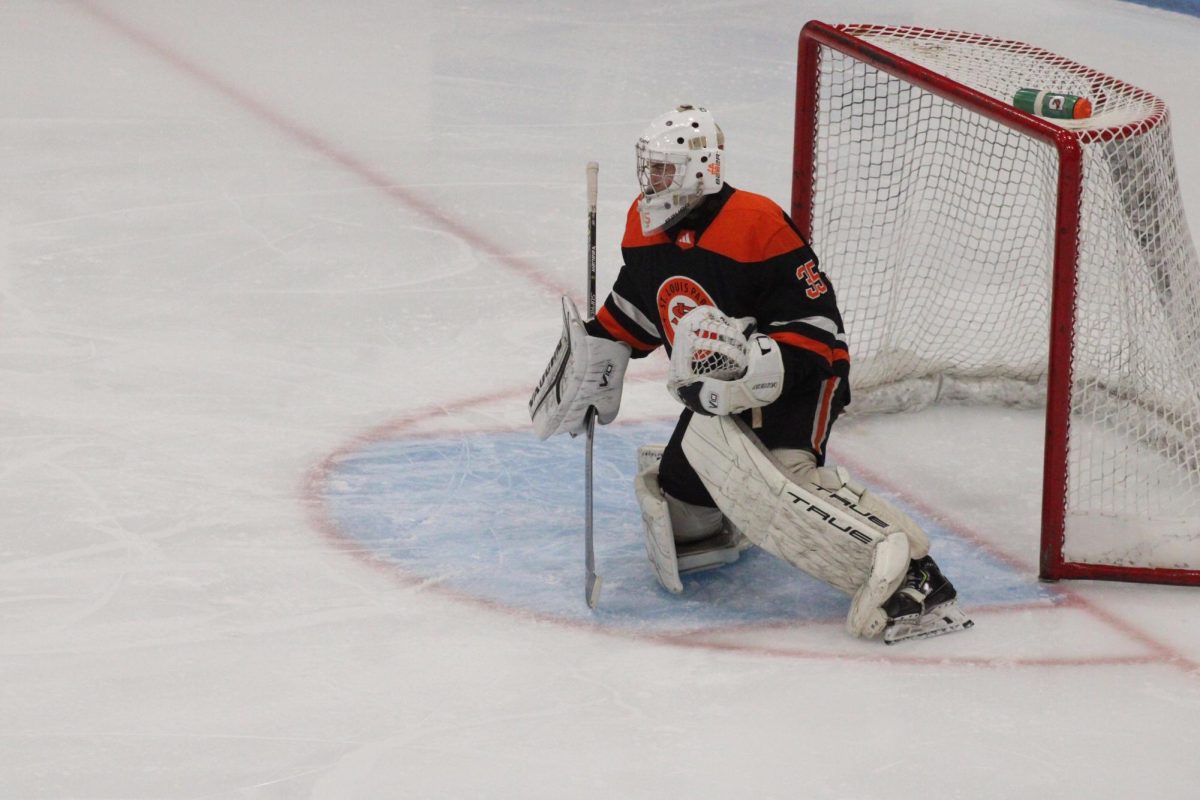On Jan. 28, three months after the tragic death of Penguins player Adam Johnson, USA Hockey reported that they will be issuing a requirement to wear neck guards starting Aug. 1. Players and on-ice officials under the age of 18 will now need to wear some form of neck protection in both games and practices.
According to athletic trainer Josh Brodersen, neck guards are worth wearing even if there’s not strong evidence of them preventing injury.
“As far as safety in a high school sport goes, it’s a cost to the player,” Brodersen said. “Is it proven to work? No. But is it worth wearing to prevent a traumatic occurence? Yes.”
Junior Calvin Otos said neck guards could be a good change for hockey players.
“I think they’re good for the sport because they protect players from possible accidents, (like) the NHL player that died on the Penguins,” Otos said.
Brodersen said the neck guard requirement may come from USA Hockey wanting to show that they’re taking action about the recent neck injuries, even if they know it’s not likely to provide much protection.
“It may not prevent a traumatic injury from occuring, especially with the sharp blade of a skate,” Brodersen said. “From what I’ve seen, it’s a heavily plastic piece of material, it’s mainly cloth, (and) I don’t think any piece of cloth could prevent a blade from puncturing your neck in those traumatic incidences. I think it’s hard to require it but it’s an easy thing to say that you’re adding that for a layer of safety.”
Freshman Lucy Boyum said the discomfort of wearing a neck guard could prevent players from wearing it at all.
“They’re really uncomfortable but I think they’re going to keep people safe when they’re playing hockey,” Boyum said. “(However) people could just not really understand the meaning behind why they should be wanting to wear them, so they just won’t.”
Otos said other players may find them uncomfortable, but he’s gotten used to wearing one for years so the new requirement won’t affect the way he plays.
“I don’t think a lot of players will want to wear them because they’re uncomfortable,” Otos said. “It doesn’t (affect me) because I’ve already been wearing one for about four years.”
As a trainer, Brodersen said any extra protection makes him feel safer regarding Park’s hockey players.
“Knowing that the players are required to wear another piece of safety, hopefully limiting or preventing the damage that something like that might have, it makes me feel just a little bit more comfortable that everybody’s out there wearing a piece of equipment like that,” Brodersen said.











